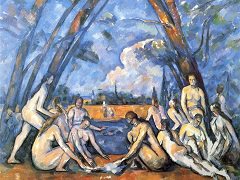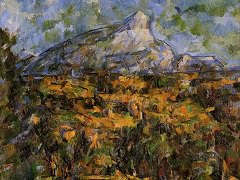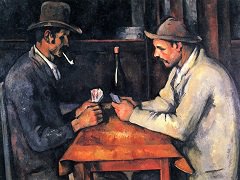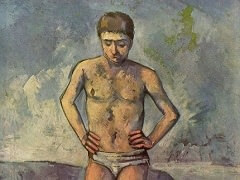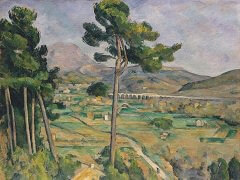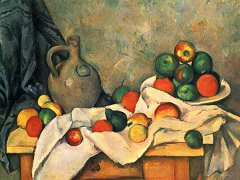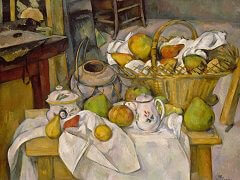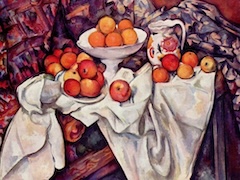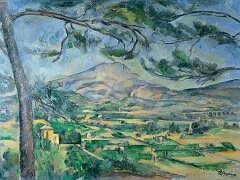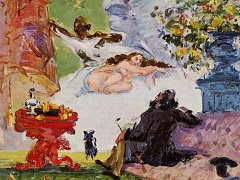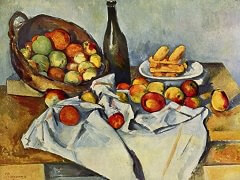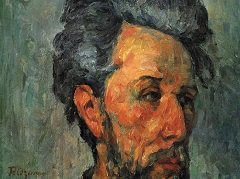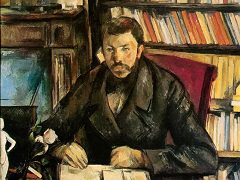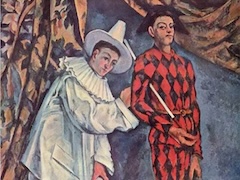View of Auvers, 1874 by Paul Cezanne
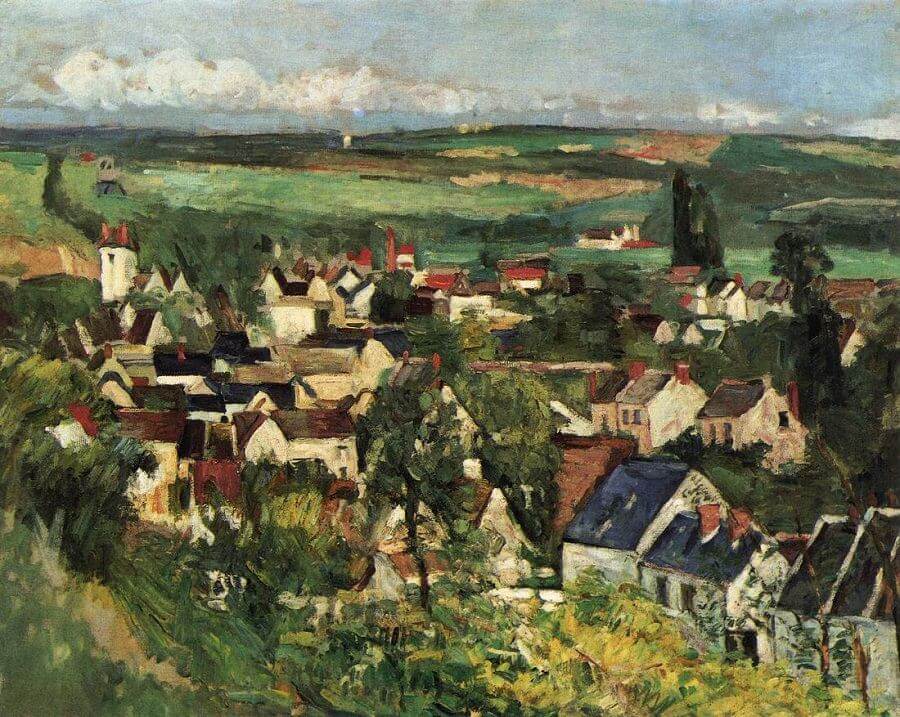
Auvers is a village near paris where the Impressionists often came to work. Here lived Dr. Gachet, an amateur artist and friend of Camille Pissarro and Cezanne, who was to care for the despairing Van Gogh some fifteen years later.
View of Auvers extends almost equally in all directions, without clear paths or dominant lines below the high horizon (although a movement from the lower right to the upper left emerges discreetly). Endlessly spotted by houses, trees, and fields, it is seen from above with no road for the observer to enter the village which lies embedded in the soft green plain. This open, dispersed world offers a great freedom to the eye; at many points is some bright color or contrast - it is a kaleidoscope that gives a different picture with every turn, but all the pictures have the same twinkling elements and the same unsorted, unarranged quality (except for the broad band of the sky). Without deep feeling, but with a great charm and ease - the result of the profusion, delicacy, and lightness of the elements - its prevailing tone is a high green, unbounded, richly nuanced, and cool. The stronger touches - blue, red, and white - are small and scattered; the quantity of white, often weakly contrasted with the adjoining light colors, brightens and softens the whole.
The panoramic depth is created not by converging lines, but by the recession of overlapping parts which become smaller and smaller. The tones offer no obvious or legible order: there are strong greens near the horizon and sharp reds in the middle space, and the same soft colors appear in the foreground and distance. The difference between the series of greens in the nearer and farther space is extremely refined. The intensity of color, the degree of contrast of neighboring tones, change by tiny intervals between the foreground and the horizon. The blue roofs of the foreground are coupled with weakened reds, the bright reds of the middle distance with weakened blues and greens. Yet the span of contrast does change noticeably at certain points as we advance into depth: it is yellow against blue in the right foreground, red against green in the middle distance, green against light blue at the horizon. In the spotting of the thickly painted colors, we pass from the relative chaos of the foreground and middle ground to the clarity of the far distance. The surface feels unconstructed and motley yet all of a piece. The charm of light and color has been won by a sacrifice of Cezanne's usual solidity and concentration. It is mainly in the decided strokes of red and blue in the roofs and chimneys, many of them vertical and horizontal, that we see a tendency toward the constructive.

